If you’re reading this article, it’s likely that you want to know what are the advantages of using watercolours over other artistic mediums.
Art mediums differ from one another, so it’s important to become familiar with watercolour benefits before you take it up as a hobby.
The advantages of watercolour include it’s vibrant and translucent nature, quick drying time, simple set up and clean up process, affordability, and versatility to be used in mixed media artwork.
And these are just the highlights!
Keep reading to discover all 9 amazing advantages that make watercolour the perfect painting medium!
Table of Contents
1. Simple Set Up and Clean Up Process
One of the best aspects of watercolour painting is that fact that it is incredibly easy to set up.
All you have to do is take out your paper, paints, brushes, mixing palette, and two jars of water. And voilà, you’re ready to start painting!
With such a simple set up process, it’s obvious to assume that the clean up process is just as easy. Simply put away all of your materials and rinse the pigment from your brushes.
For this reason, watercolour is an excellent artistic medium for plein air painters who love painting outside.
The portable nature of the paint palettes and easy set up process means that you can take your watercolours pretty much anywhere: to the park, the museum, beach, and so on.
2. Watercolour Supplies Are Very Affordable
I’ll be the first to say that you don’t need a gigantic closet full of watercolour supplies in order to create beautiful paintings.
In fact, all you need are the following art supplies:
- 100% cotton cold-pressed watercolour paper
- A good-quality watercolour set (pans or tubes)
- A decent set of watercolour brushes
- 2 jars for rinsing off pigment
- A mixing palette (if your watercolour set doesn’t come with one)
- Painter’s tape
- Paper towels or a cloth
These are all the supplies you’ll need at a bare minimum. As you become a better watercolourist, you can add additional supplies to your collection such as masking fluid, black or white ink, etc.
To learn more, check out this popular article which is a detailed list of my favourite watercolour supply recommendations.
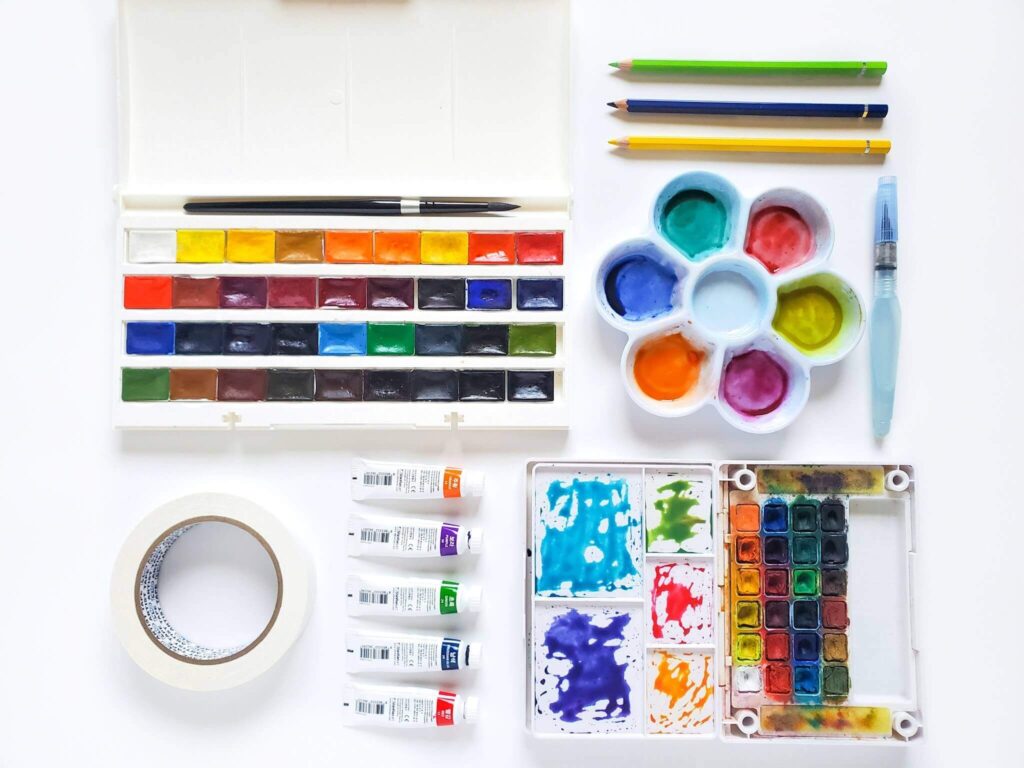
3. Quick Drying Time
Unlike oil painting, which has an incredibly long drying time, watercolour dries much faster.
After you’ve painted a layer, it only takes a few minutes for the pigments to completely soak into the paper and dry.
But, if you’re an impatient artist, don’t fret! There’s a simple way to speed up the drying process even faster.
All you have to do is plug in a hair dryer and set the device to a warm but low speed setting.
Gently move the hair dryer back and forth across the painting, allowing the warm air to disperse evenly across the moist paper.
Related: Once they’ve dried, how long do watercolours last? Read this article to find out!
4. Watercolour Works Well With Mixed Media Artwork
One of my favourite advantages of watercolour is that it compliments other artistic mediums very well!
If you’re not aware, mixed media artwork simply refers to artwork that is created by using multiple artistic mediums.
A common form of mixed media artwork is to combine watercolour and ink to make beautiful pieces of art.
Due to it’s light and translucent nature, watercolour compliments the dark and bold dynamic of inking to create visually appealing contrast.
This is why so many artists love to learn how to combine ink and watercolour.
Another example of mixed medium artwork is combining watercolour with gouache.
Gouache belongs to the watermedia family, meaning it can be activated by adding water to the pigment. But unlike watercolor, gouache can also be used dry without needing any water.
Essentially, gouache is a thicker and more opaque form of watercolour. Although it behaves similarly, it dries with a matte and bold finish. This quality gives it a unique appearance.
If you’re curious, check out this article to learn more about the similarities and differences between gouache and watercolour.
5. Watercolour Improves Your Mental Health
A watercolour strength that is being talked about more and more often is the positive impact of watercolour on your mental health.
In our modern world, many people are feeling more stressed, burned out, and overwhelmed than ever before.
Since watercolour is a calm painting practice that can be done individually and peacefully, it’s the perfect artistic medium for anyone who is looking for a way to unwind and relax.
In fact, there have been many scientific studies that have proven that art can be very therapeutic and cathartic for people who are struggling with mental health issues.
So if you’re looking for a way to improve your mental and emotional well-being, you should consider incorporating watercolour into your weekly routine.
After all, painting with watercolour can serve as a wonderful form of self-care for stressed out artists.
6. Watercolour is Beautiful, Vibrant, and Translucent
If you want to know why watercolour is good, you’ve asked the right question.
After all, watercolour is renowned for its light, bright, and translucent qualities.
The vibrant but soft nature of watercolours captivates the viewer’s eye in ways that are much different from, let’s say, the thick nature of oil paints or the bold, matte nature of gouache.
In essence, one of the best advantages of watercolour is its ability to capture luminosity, vibrancy, and translucency without compromising any of them.
Note: To learn more about the key elements of a great watercolour painting, check out this article.
7. Watercolour Teaches You to Slow Down
One of advantages of watercolour is that it teaches you to slow down.
Since watercolour is based on layering pigments on top of one another, you have no choice but to wait until the first layer has dried before you move on to the next layer.
In this way, watercolour teaches you to slow down and take your time creating art. I believe this lesson is so important that I placed it at #1 in my blog post about the best life lessons watercolour teaches you.
Art is a journey, not a destination. So, it’s worthwhile to enjoy the painting process and not fret over how long it takes to complete.
By learning to slow down and enjoy the process of creation, it’s easier for you to slip into a work flow state.
Similar to point number 6 on this list, learning to slow down is an essential watercolour habit that will lead to considerably less stress not just in your artistic endeavours, but also in your life as a whole.
Never forget that all of the skills and habits you learn from watercolour painting can also be applied to different aspects of your personal, professional, and familial life.
8. Watercolour Teaches You to Be Intentional
You might be wondering, “How on Earth does watercolour teach you to be intentional?”
Well, let me explain.
Since this type of painting can be tricky to fix if you don’t know how to fix your watercolour mistakes, watercolour painting teaches you how to be intentional with your artwork.
For example, since watercolour can be difficult to fix once the layer has already dried, you’re more likely to be intentional about every brushstroke or colour that you lay down.
What’s more, you’ll likely take more time to plan out your painting’s composition or work on small thumbnails before you commit to a painting so as to not go in unprepared.
This could lead to you accidentally messing up your painting, wasting paper, and having to start all over anyway.
So, take the time to be intentional with your artistic choices.
Note: Is watercolour really as difficult as everyone thinks it is? Find out the answer in this well-loved article about debunking common watercolour myths.
9. Watercolour Paint Isn’t Smelly
It may sound a bit funny to include this point on the list, but it’s true!
Some artistic mediums use supplies that give off a rather unappealing smell. Think of alcohol markers or oil painting.
Fortunately, watercolour doesn’t have this rather unfortunate problem.
So if you’re sensitive to chemicals or smells, you’re not going to have any problem painting with watercolours.
But don’t worry; most watercolour pigments aren’t toxic.
But if you still have concerns about the few that are, make sure you some research about the paint set or watercolour brand that you’re interested in before making any purchases.
What is the Disadvantage of Using Watercolour?
Now that we’ve thoroughly discussed the advantages of watercolour, I’m sure you’ve been wondering if there are any disadvantages of using watercolor paint.
The truth is that, like anything, there are a few cons of watercolour.
The disadvantages of watercolour include paint pigments that dry lighter than when they’re first applied, watercolours can only be painted on thick water absorbent paper, and the wrong paint to water ratio can ruin your painting.
It’s not the end of the world, though.
As long as you’re using good-quality supplies and are taking the time to learn how to paint well with watercolours, then you’ll be able to easily avoid these problems.
For instance, if you struggle with figuring out the best water to paint ratio, I highly suggest that you check out this thorough article that explains how to master water control.
Conclusion
As you’ve learned, the advantages of watercolour are numerous.
Therefore, if you’ve been thinking about taking up watercolour as a hobby, I strongly encourage you to do so.
And if you’ve been painting with this medium for a while, you now have a deeper understanding of all the amazing benefits you’re getting from this wonderful artistic medium.
But there’s one major takeaway that I want you to understand.
Ultimately, the advantages of watercolour come down to whether you take advantage of them or not.
It’s up to you to decide whether you’ll get the most out of this medium.
So, I highly encourage you to do so.
Do you know of any other watercolour advantages that I haven’t included on this list? Share your opinion in the comments below!
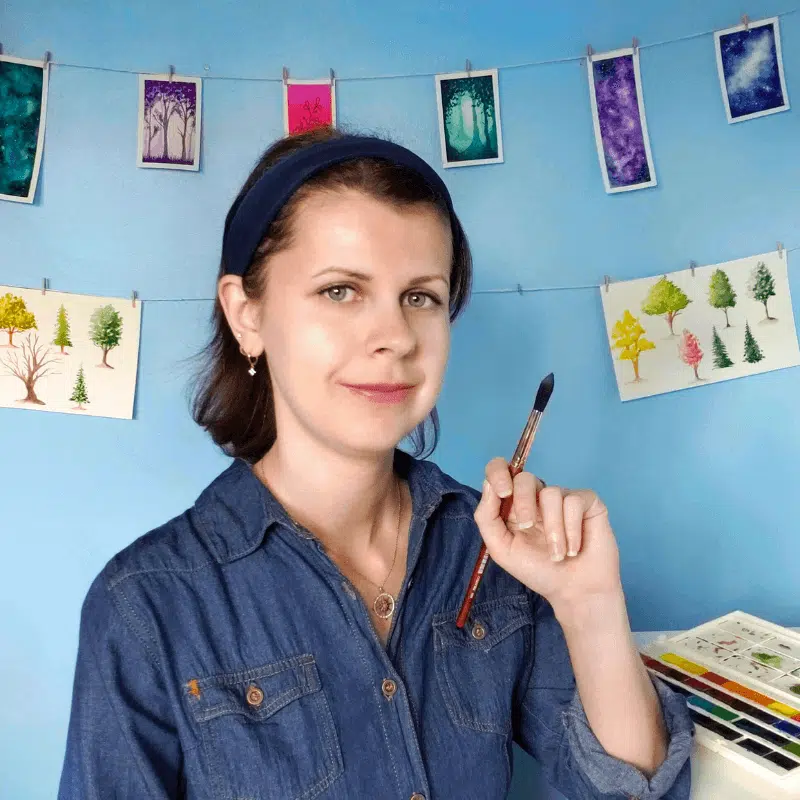
Miranda Balogh
Artist & Online Educator

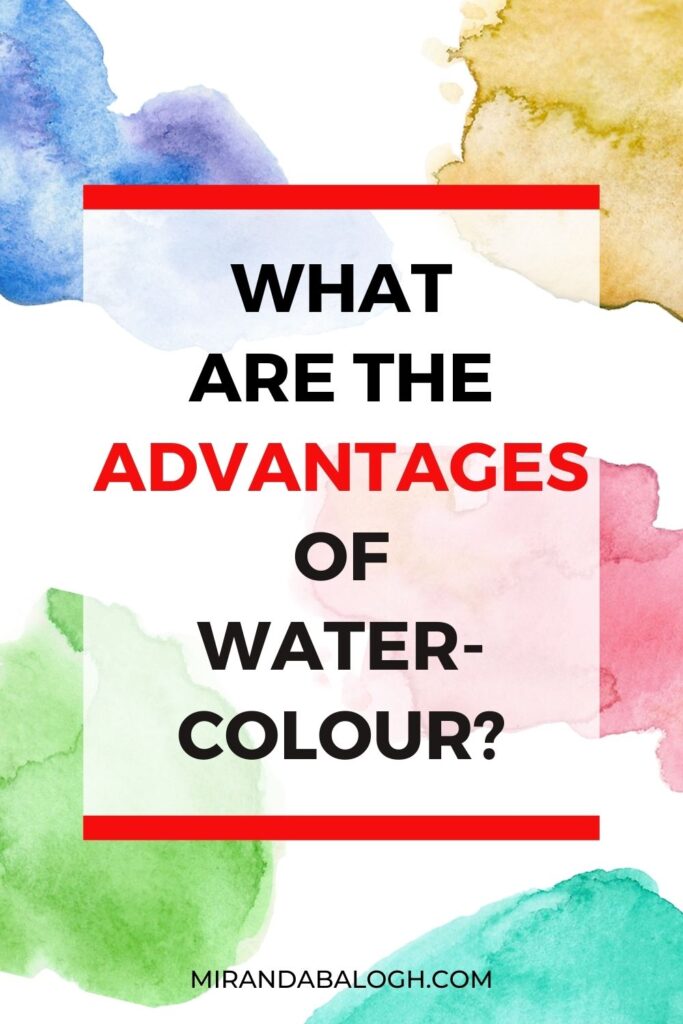
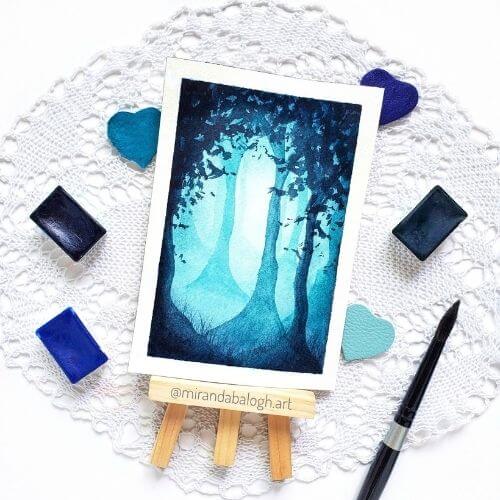
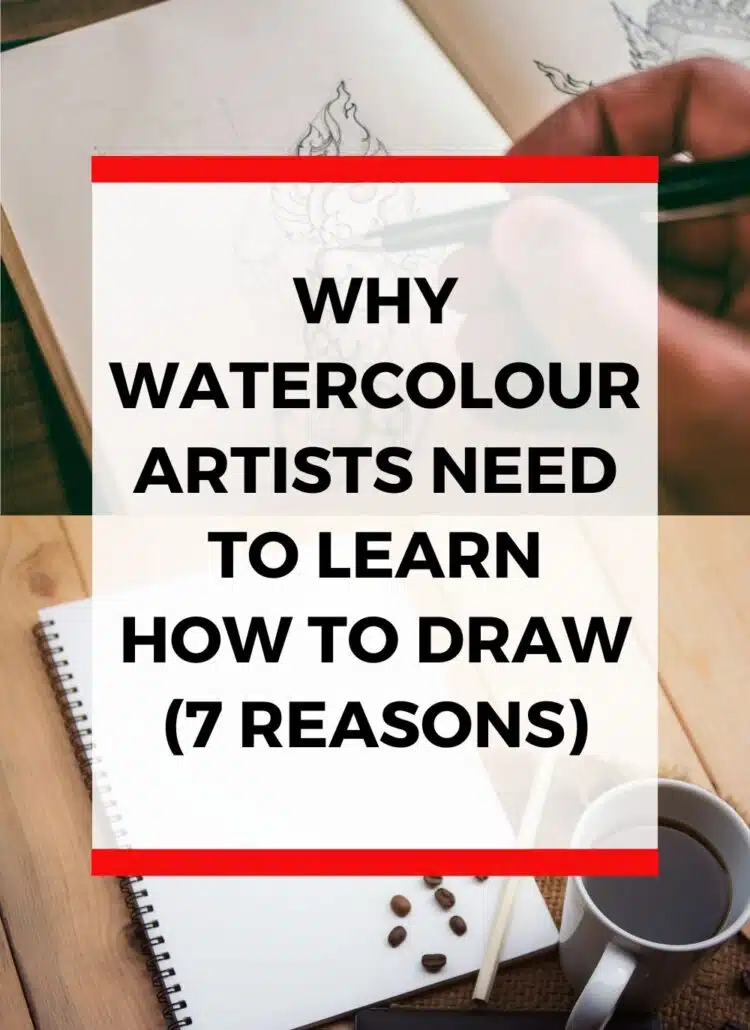
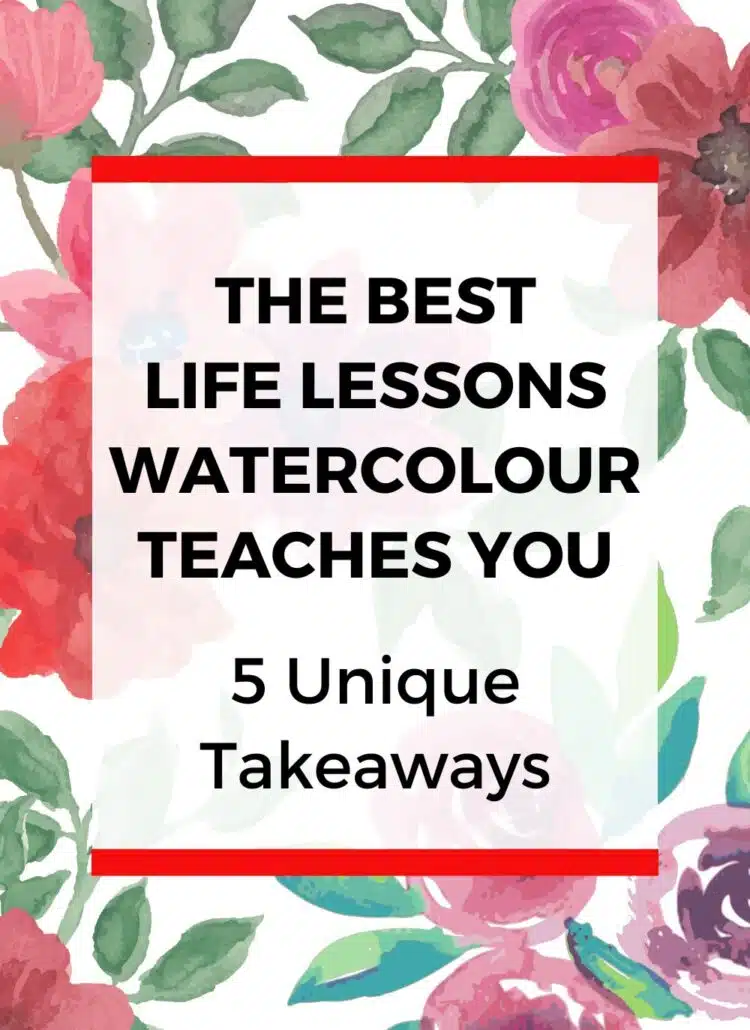

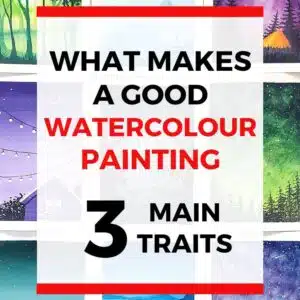
Such a beautiful post! You’ve really inspired me to get out my water paints and start drawing my own picture, thank you!
You’re welcome! Have fun painting with watercolours.
I am learning to appreciate watercolor paintings. My daughter is great at it, but I’m scared mine will turn into a muddy mess 🙂 Thanks for sharing this list of advantages. Your art is beautiful!
Thank you very much! The only way to get good at watercolour (or anything, really) is to overcome your fear. So don’t be afraid of making a muddy mess. After all, it’s by making mistakes that we learn how to create beautiful paintings.
Very nice article. Love your work!
Thank you! I appreciate it.
I love water colors! And painting can be so relaxing and therapeutic, thank you so much for sharing these insights! 🙂
You’re welcome! I love the calming nature of watercolour painting, too.
Outstanding writeup, Miranda! I especially appreciated the bit about how watercolors (and other artforms) can help with mental health. I work in a psych hospital and can confirm!
Thank you very much! Art is such a therapeutic activity that can improve one’s mental health. For that reason, I always remind people of this benefit whenever I can.
Great post! I tried watercolours last year and gave up. Perhaps I should get back into it. 🙂
I encourage you to give watercolours another try! There are so many educational blogs, books, and video tutorials to learn from.
Love this! Would love to have you share your expertise with others and earn money for each class you teach on PhaseUp Learning. We are launching later in 2022 and currently building a list of highly qualified instructors. If you’re interested, you can find more info and fill out an interest survey.
I’m glad you found this article valuable. And thank you for reaching out with an opportunity!
Watercolour is one of my favourite media. It’s so versatile and the transparency creates beautiful images.
Yes, you have to be intentional and yes, it forces you to slow down. You have to think how you’re going to set up your layers, what will you paint first, etc.
Thanks for your article.
I agree. Watercolour is one of my favourite artistic mediums, too!
Watercolor paints are so fun and this post was incredibly helpful for learning why they’re so great! I definitely think the best part is there’s no smell so you can use them anywhere!
Thank you so much! I’m glad that you agree with these watercolour advantages.
Love your work. It’s commendable 👏
Aw, thanks! I appreciate it.
What a nice activity to do with students!
Agreed! It’s fun to paint with other people.
This post made an interesting point that one of the many benefits of watercoloring is that it helps soothe anxiety. The other day my wife mentioned she would like to learn how to watercolor. Maybe I can recommend her to register for a course to help her learn the basic techniques.
Yes, painting with watercolour can be great for improving one’s mental health. Registering for a course sounds like a good way to help her get started, so I recommend it!
I stumbled onto this page by Googling “how to use watercolor painting for OT”
I’m a senior citizen and I got COVID. It has left me with a lot of weakness and shaky hands. It has affected my ability with small motor projects with my hands. Today my Physical Therapist suggested water color painting as therapy and to reclaim the ability to write nicely and draw as I used to. So I’m on a quest. Reading your page was very interesting. — Carol
Hi, Carol! I’m sorry to hear that you got Covid, and I hope your recovery is going well. As well, I’m glad to hear that your physical therapist suggested that you try watercolours. If you take up watercolour painting as a hobby, I hope you enjoy it!